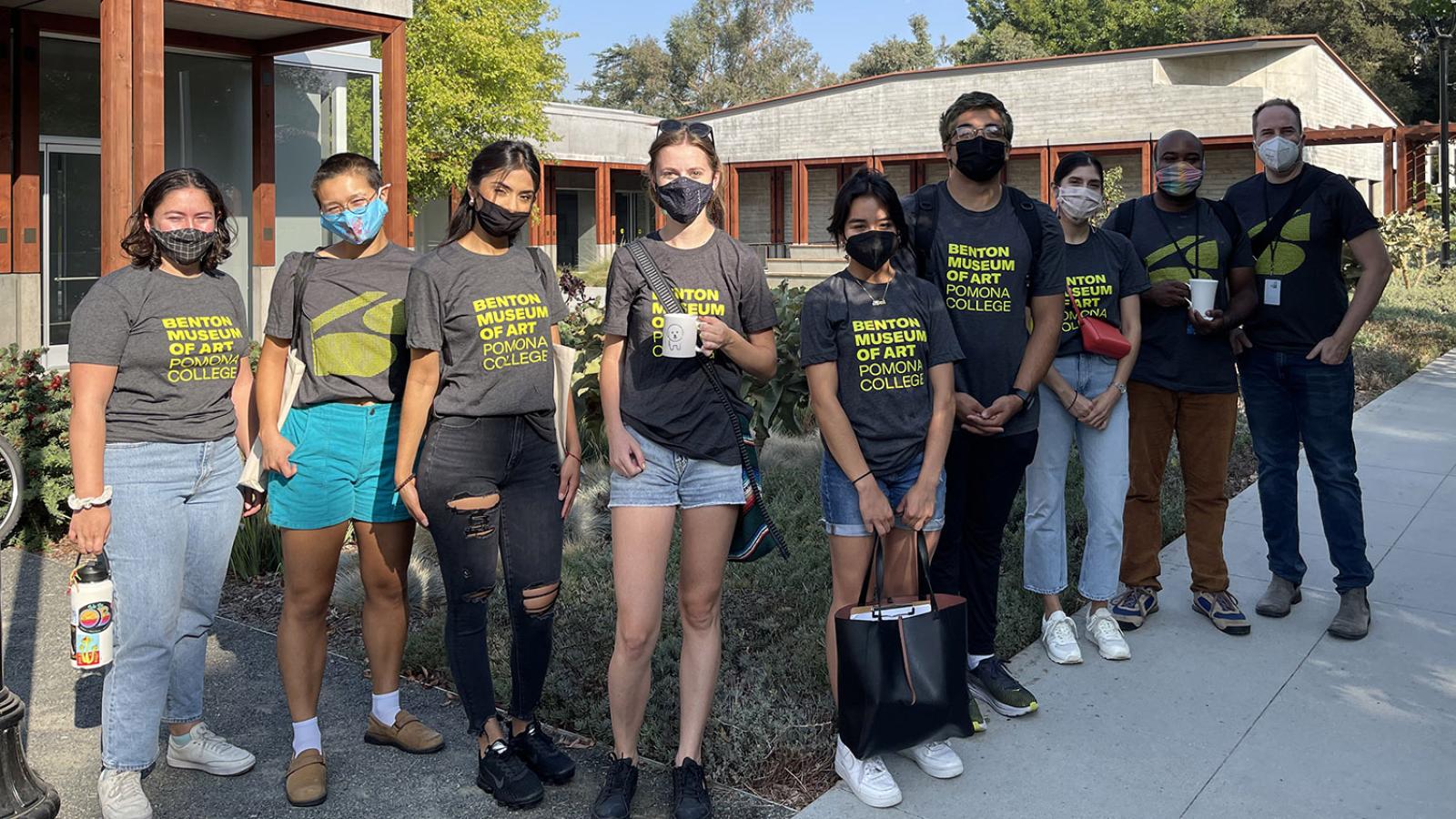Located five miles from campus, the Pomona Fairplex, usually home to the L.A. County Fair, has served as a shelter for migrant children since May. The center has temporarily housed 10,000 unaccompanied minors fleeing poverty and violence in Central America and seeking to reunite with relatives in the U.S.
Staff of The Benton Museum of Art at Pomona College toured the site in July to explore how the College could be of service to the center, specifically in delivering activities to the children. Many charities, faith groups and sports organizations were providing recreational activities, and the Benton Museum staff thought that they could contribute something as well.
The Benton team decided to provide monthly “art encounters” where the children could create their own art. Maelvi Nunez ’22, the Benton Museum's community arts engagement intern, worked with Rich Deely, the museum’s K-12 education specialist, to coordinate these visits.
In late August, a team of students and museum staff facilitated a magnetic-button-making activity, which gave the children the chance to plan and color art they could easily take with them. In September, the Benton staff returned with a larger team of Claremont Colleges student volunteers to facilitate a project in which the children picked a word that was significant to them and used oil pastels to blend those words into art forms and abstract shapes on small pieces of paper. Recurring words that the team saw included “amiga” and “amigo” and the children’s countries of origin.
“As a person who migrated to the U.S. at a young age, my shared lived experiences with the children made this work very personal to me,” says Nunez. “I wanted to bring them joy in the form of art-making and to reassure them that there are people who care and actively support them. When words were not sufficient, art allowed for a common language between the volunteers and the children.”
The center closed earlier this month after more than 8,000 children had been reunited with family members or placed with sponsors in the U.S.
“Our aim was always to provide a moment of relief and creativity during what is undoubtedly a stressful time for the children,” says Deely. “Now that the center is winding down operations, we hope to take this model of easing stress through art-making to other populations in need.”
